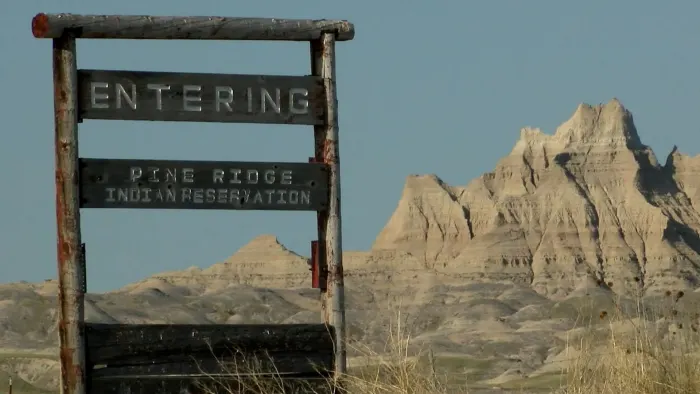News Based on facts, either observed and verified directly by the reporter, or reported and verified from knowledgeable sources.
Thunder Valley takes steps toward MMIP search and rescue
 Names of Missing and Murdered Indigenous Women hang inside the Red Ribbon Skirt Societies Center for Healing Prayer and Remembrance at the Racing Magpie in Rapid City. (Photo by Adam Fondren, Rapid City Journal Staff)
Names of Missing and Murdered Indigenous Women hang inside the Red Ribbon Skirt Societies Center for Healing Prayer and Remembrance at the Racing Magpie in Rapid City. (Photo by Adam Fondren, Rapid City Journal Staff)
In an effort to combat the Missing and Murdered Indigenous People crisis, Thunder Valley Community Development Corporation held a search and rescue training on Pine Ridge as part of its new search and rescue initiative
Approximately 60 percent of the 140 unsolved missing person cases in South Dakota are Native American, according to data from the South Dakota Missing Persons Clearinghouse.
A new initiative, led by the Thunder Valley Community Development Corporation, aims to implement search and rescue teams on the ground in Pine Ridge to help search for people as soon as they go missing.
“Whenever someone goes missing here, it’s kind of disorganized, people don’t know who to call,” Elaine Yellow Horse, citizen of the Oglala Lakota Nation and the housing and homeowner director for Thunder Valley. “We want to develop a plan, kind of a standard operating procedure.”
Twelve of the missing Native American people are from Pine Ridge.
On June 22, 22 volunteers were search and rescue certified after a three day training. Volunteers came from a mix of Thunder Valley staff and members of the Thunder Valley workforce cohort.
The training included education on conducting grid searches, sweeping houses, preserving crime scenes and administering first-aid.
For Lynette Kills Back, Oglala Lakota citizen and the Thunder Valley Workforce Development Director, MMIP is personal. Kills Back has lost two family members, her cousin Leatrice “Leah” Jealous of Him was killed in Rapid City in 2009 and in 1985 her cousin Sharon Kills Back, was killed in Arlington, Texas. Jealous of Him’s murder is still unsolved.
“Just having the manpower to conduct a search is really low,” Kills Back said. “So why don’t we create these teams here at Thunder Valley… we have our own homegrown teams here.”
(Related: New MMIP program to strengthen investigative efforts)
As part of Kills Back’s job, she helps a cohort of community members, who she nicknames her “kids”, who are ages 18-24 to build their workforce skills. Having the cohort take the class felt natural, Kills Back said.
The search and rescue team’s services would be completely free of charge.
“We’re not asking for compensation, because these are our relatives,” Kills Back said. “Many can’t afford to outsource another agency that would come and help them look.”

The search and rescue initiative would establish a command center which families can call to dispatch the certified rescue team. The rescue team will consist of volunteers on horseback, drones operated by certified technicians and members on ATVs.
“I’m currently researching the laws here on the reservation and also federal laws to see if I can write something that I can ask the tribal council to pass,” Yellow Horse said.
Thunder Valley CDC began as a housing initiative on Pine Ridge and also healing tribal citizens through knowledge of their traditional Lakota lifeways.
After the disappearance and death of Shauna Youngman Afraid of His Horses last year, Thunder Valley reached out to her family and began thinking about what could be done in the future to aid families.
“I think this is a really good thing for the reservation and I’m hoping that other reservations jump on and start getting people in their communities certified, that way you don’t have to wait for the cops to start searching and get organized,” Yellow Horse said.
Thunder Valley is aiming to hold another search and rescue training sometime in the fall when more volunteers are free.
This story is co-published by the Rapid City Journal and ICT, a news partnership that covers Indigenous communities in the South Dakota area.
Dateline:
RAPID CITY, S.D.
